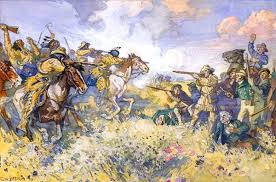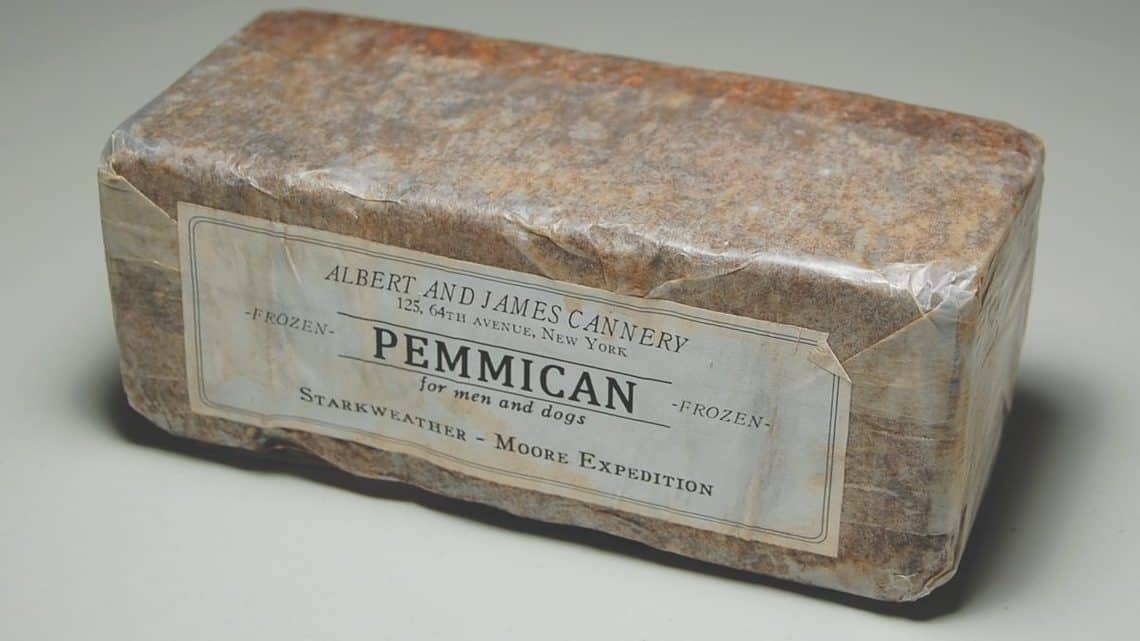To grasp the utility and value of pemmican, it’s helpful to first understand its history.
No other food has been tested as widely by so many people living in harsh conditions as pemmican, and there are numerous historical examples of its value as both a trade commodity and a necessity for adventurers and explorers.
This is the exact opposite of most foods we consume today. Brand new concoctions, created by big food companies that line their pockets and get you sick.
Pemmican was the essential source of protein for all North American explorers and leather traders until the end of the 19th century.
Fur traders in Canada did not have time to farm the land during the short season when lakes and rivers were free of ice. They had to carry everything they needed for survival if the distance traveled was too great to be replenished along the way.
The traders were people of mixed origins known as Métis. They went to the prairies southwest of the Red River, hunting bison and producing pemmican.
The packs of pemmican were then shipped north and stored at the main filling stations of the fur traders. For these people, the pemmican trade was just as important a source of income as the fur trade was for the indigenous peoples further north.

Pemmican was so important that, in 1814, Governor Miles Macdonell started the Pemmican War with the Métis when he passed the short Pemmican proclamation, which banned the export of pemmican from the Red River colony. It was not a real war, but rather a series of skirmishes that ended in 1821 with the merger of the two companies that traded fur in Europe: the Hudson’s Bay Company (HBC) and the North West Company (NWC).

Alexander Mackenzie relied on pemmican for his 1793 expedition across Canada to the Pacific.
North Pole explorer Robert Peary used the pemmican on all three of his expeditions, from 1886 to 1909, for both his men and his dogs (hence the inspiration to our slogan - for men and dogs ;)
Members of Ernest Shackleton’s 1914-1916 Antarctic expedition resorted to eating pemmican intended for sled dogs when they got stuck on ice for the winter.

The “Emergency Ration” supplied to British soldiers in the Second Boer War in 1889 consisted of 110g of pemmican and 110g of cocoa and sugar. During the Second Boer War (1899-1902), the British troops were supplied with the ration of pemmican. This ration was kept in two small boxes that were fastened inside the soldiers’ belts. It was the ration to be used only as a last resort. American adventurer Frederick Russell Burnham ordered each scout to carry pemmican when he served as scout leader for the British army in South Africa.
In 2019, a Youtuber, Steve Thomas, ate pemmican of a perfectly preserved 1906 US Army Emergency Ration Pack. The footage was released the following year on March 7, 2020.
Pemmican is a traditional, nutrient-rich food invented by Native Americans well over 500 years ago. The word comes from Cree pimîhkân, derived from the word pimî, meaning “fat” or “grease.”
The traditional method for preparing pemmican involves salting and drying lean meat, crushing or pounding it into a powder, then adding hot rendered fat in equal volume to the dried meat. Some pemmican also includes ingredients like dried crushed berries, honey, or maple syrup.
Most of the time, Native people and the Europeans who later adopted the practice of making pemmican would also seal it in sewn rawhide pouches using additional hot fat, then compress it while it was still hot.
After cooling, the parcels of pemmican were a durable, valuable commodity traded between Native tribes and European settlers alike.
Because the lean, dried meat is powdered prior to adding animal fat, the fat coats every particle of meat. Modern accounts indicate pemmican can last up to five years, but some reports indicate under certain conditions it has lasted for over 30 years.
Generally speaking, it takes about 3 to 5 pounds of meat to make a single pound of pemmican. In the 19th century, traders noted that a 1000-pound buffalo on the hoof would process down to about 90 pounds of pemmican.